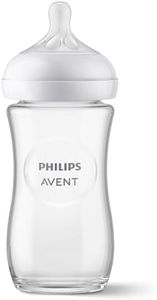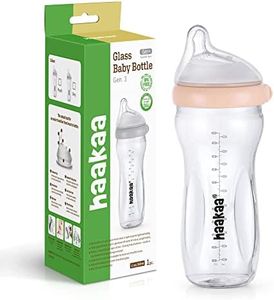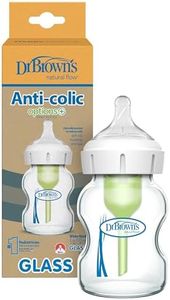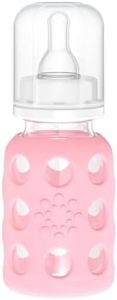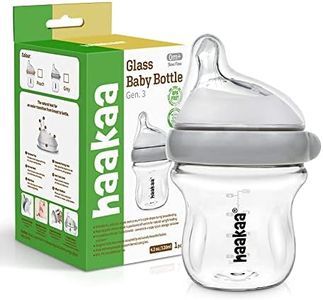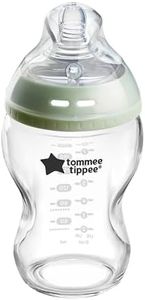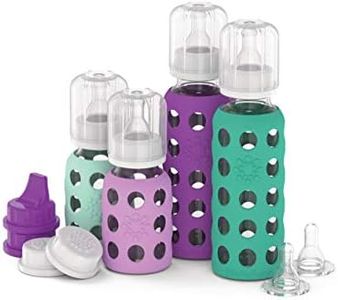We Use CookiesWe use cookies to enhance the security, performance,
functionality and for analytical and promotional activities. By continuing to browse this site you
are agreeing to our privacy policy
10 Best Baby Glass Bottles
From leading brands and best sellers available on the web.Buying Guide for the Best Baby Glass Bottles
Choosing the right baby glass bottle can feel overwhelming with so many options, but focusing on your baby's needs and your own lifestyle will help. Glass bottles are loved for being free of chemicals like BPA, easier to clean, and environmentally friendly. When picking a bottle, consider how easy it is to use and clean, whether the bottle suits your baby's feeding style, and if the nipple flow matches your baby’s age and stage. Also, check how sturdy and comfortable the bottle is for both you and the baby to hold.Bottle CapacityBottle capacity refers to how much liquid the bottle can hold, usually measured in ounces or milliliters. This is important because it determines how much milk or formula you can feed your baby at once. Bottles typically range from small (around 4 oz) for newborns to larger sizes (8-9 oz) for older babies. Smaller bottles are best for newborns who eat less at each feeding, while bigger bottles suit babies who are eating more. Choose a size that matches your baby’s current feeding needs, but remember you might need different sizes as your baby grows.
Nipple Type and FlowThe nipple on a baby bottle can have different shapes and flow rates, which affect how easily milk comes out. Flow is usually categorized as slow, medium, or fast, and sometimes by age group. Newborns need slow-flow nipples to help control feeding and prevent choking, while older babies can handle medium or fast-flow nipples. Additionally, some babies prefer traditional shapes, while others take to wide or breast-like nipples, which can help if you alternate bottle and breastfeeding. To pick the right one, start with slow flow for young or newly bottle-fed babies and adjust as they show signs they need a faster flow.
Glass Thickness and DurabilityGlass thickness and durability describe how sturdy and break-resistant the bottle is. Thicker glass bottles are less likely to break from accidental drops, adding safety for both baby and parent. However, thicker glass can be heavier, so some parents prefer a balance between sturdiness and weight. If you’re worried about breaks or use bottles on the go, look for bottles advertised as ‘shock-resistant’ or ‘tempered’ glass. For those always using bottles at home under close supervision, a regular sturdy glass bottle may suffice.
Ease of CleaningEase of cleaning refers to how simple it is to take apart, wash, and reassemble the bottle. Glass bottles generally don’t retain odors or stains as easily as plastic, but the design affects how easy they are to clean. Bottles with wide necks are typically simpler to wash because brushes can reach inside more easily. Consider how many parts the bottle has—fewer parts mean quicker cleaning and less chance of losing small pieces. This is especially important if you’re washing bottles often.
Vent System/Anti-Colic FeaturesSome bottles include special venting systems to reduce the amount of air your baby swallows during feeding, which can help prevent gas and colic. These systems can be built into the nipple or as extra pieces inside the bottle. If your baby struggles with gas, fussiness, or spit-up, picking a bottle with anti-colic features might be helpful. For parents whose babies don’t have these issues, a standard bottle without extra parts might be simpler and easier to clean.
Grip and Sleeve OptionsThe grip and any added sleeve refer to how easy and safe it is to hold the bottle. Some glass bottles come with silicone sleeves that give a better grip and extra protection against breakage. Sleeves can help both babies and parents hold the bottle comfortably and prevent slips. If you want added durability or often travel with your bottle, a sleeve is a good feature. If the bottle mostly stays at home and is handled carefully, this may be less important.
